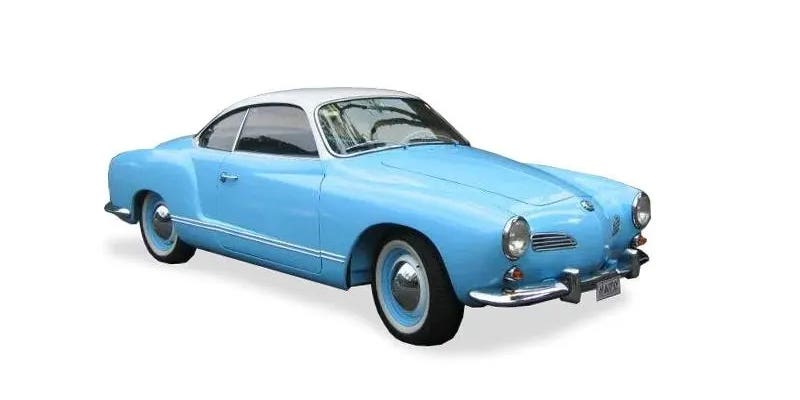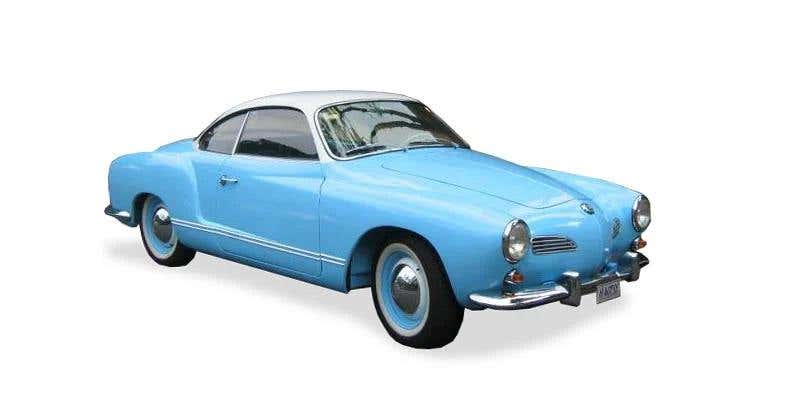History of the Volkswagen Karmann Ghia


The Type 14 Karmann Ghia
Introduction
The Volkswagen Karmann Ghia Type 14 is a classic sports car that was produced by the German automaker Volkswagen between 1955 and 1974. It is known for its stylish design and was a collaboration between Volkswagen, Karmann, and Italian design firm Ghia.
Development and Design:
In the early 1950s, Volkswagen's management sought to expand its product lineup beyond the utilitarian Beetle. They approached Wilhelm Karmann, a German coachbuilder, to develop a stylish and sporty car based on the Beetle's mechanical components. Karmann enlisted the services of Italian design firm Ghia, led by Luigi Segre. The design for the Karmann Ghia was created by Sergio Sartorelli, an Italian designer working at Ghia.
The Karmann Ghia featured a sleek and curvaceous body with a low roofline and prominent rear fenders. It was designed to evoke the look of high-end sports cars of the time.
Introduction and Production:
The first Karmann Ghia Type 14 was unveiled as a concept car at the Paris Auto Salon in 1953. It received an overwhelmingly positive response, prompting Volkswagen to move forward with production.
Production of the Karmann Ghia began in 1955 at Karmann's factory in Osnabrück, Germany. The car was built on a modified Beetle platform, using the Beetle's mechanical components.
Over the years, several updates and improvements were made to the Karmann Ghia, including changes to the engine, interior, and exterior details. However, the overall design remained largely unchanged throughout its production run.
Popularity and Legacy:
The Karmann Ghia was well-received for its elegant design, affordability, and reliable mechanicals. It appealed to a broader audience beyond the Beetle's traditional customer base.
The car gained popularity in the United States, becoming a symbol of the growing interest in European sports cars during the 1960s and 1970s.
Despite its sporty appearance, the Karmann Ghia was not a high-performance vehicle. It offered modest performance with its air-cooled flat-four engine, which underwent several upgrades during its production.
End of Production:
By the early 1970s, changing market demands and stricter safety regulations made it difficult for the Karmann Ghia to compete. Production eventually ceased in 1974. Over its production lifespan, approximately 445,000 Karmann Ghias were built, with the majority sold in the United States.


1953:
The Karmann Ghia Prototype played a significant role in the development of the Volkswagen Karmann Ghia Type 14.
The Karmann Ghia Prototype made its debut at the Paris Auto Salon in 1953. It received an overwhelmingly positive response from both the public and automotive enthusiasts. The prototype showcased a new direction for Volkswagen, with a focus on style and sophistication.
Production Development: Following the positive reception of the prototype, Volkswagen decided to move forward with production. The design of the prototype served as the basis for the production version of the Karmann Ghia Type 14, which went into production in 1955.
Changes from Prototype to Production: While the overall design of the prototype was retained for the production model, some modifications were made to adapt it for mass production and to meet regulatory requirements. Notable changes included adjustments to the front and rear bumpers, headlights, and interior features.


1955:
The first VW Karmann Ghia Type 14 rolled off the production line in Osnabrück, Germany. It was available as a two-seater coupe and featured a rear-mounted air-cooled flat-four engine borrowed from the Volkswagen Beetle. The design combined the mechanical components of the Beetle with a stylish body crafted by Italian design firm Ghia and built by German coachbuilder Karmann.
1957:
The Karmann Ghia expanded its lineup by introducing a convertible version. The convertible offered open-top driving pleasure while retaining the same elegant design as the coupe. The convertible top was manually operated and could be folded down for a true open-air experience.


1958:
The Karmann Ghia received its first significant engine upgrade. The original 1.2-litre engine was replaced with a larger 1.3-litre engine, providing a slight boost in power and improved performance.
1961:
The Karmann Ghia underwent a design refresh. The front end received a revised grille, and the rear taillights were enlarged and incorporated into the fenders. These updates gave the car a more contemporary look while retaining its classic charm.


1963:
The Karmann Ghia saw another engine upgrade. The 1.3-liter engine was replaced with a more powerful 1.5-liter engine, providing improved acceleration and a higher top speed. Additionally, front disc brakes became available as an option, enhancing braking performance.
1966:
To comply with US safety regulations, the Karmann Ghia received various safety updates, including a new dual-circuit braking system, a collapsible steering column, and improved safety belts. These changes aimed to enhance occupant safety and meet the evolving safety standards of the time.


1970:
The Karmann Ghia underwent its final engine upgrade. The 1.5-liter engine was replaced by a more robust 1.6-liter engine, further improving performance. The 1.6-liter engine was available in two versions: a single-port engine and a more powerful dual-port engine.
1971:
As a response to changing emission regulations, the Karmann Ghia received an updated engine with improved emission controls. These changes were aimed at reducing pollution and complying with stricter environmental standards.


1974:
The last year of production for the Karmann Ghia Type 14. By this time, the Karmann Ghia had been in production for nearly two decades. Despite its enduring popularity, increasing competition from more modern sports cars and changing market demands led to the discontinuation of the model.








